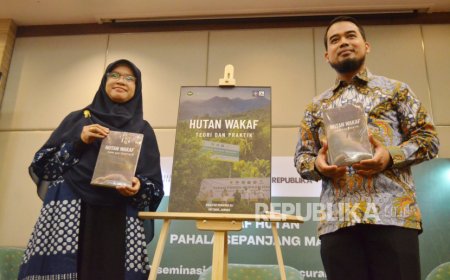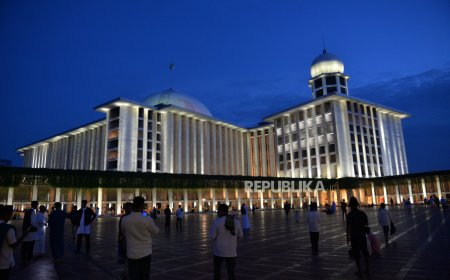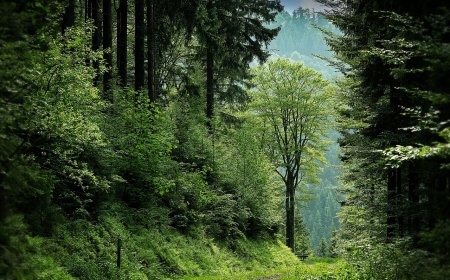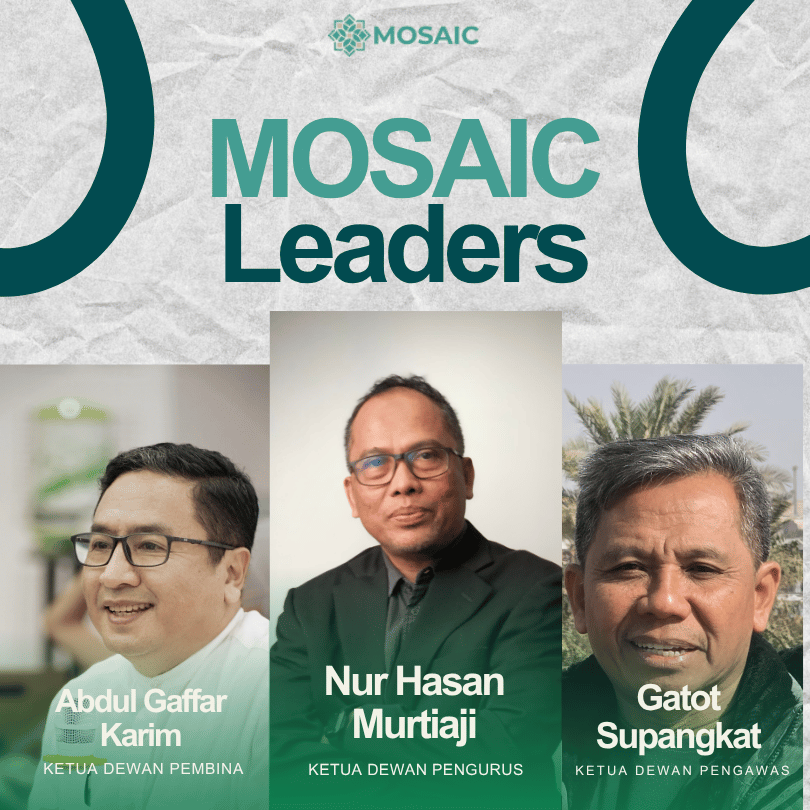Greening back waqf again
The green waqf scheme corresponds to a sustainable development paradigm
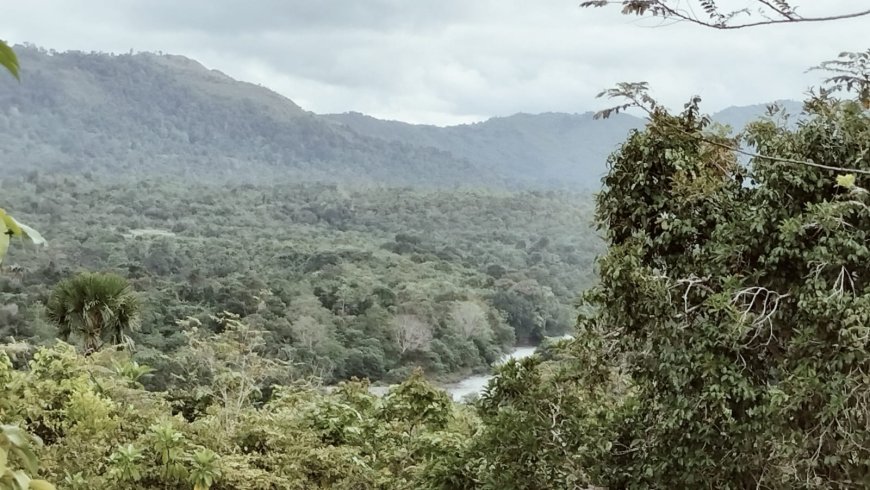
MOSAIC-INDONESIA, JAKARTA -- Waqf is one of the oldest economic concepts in Islam that is still practiced today. This concept was taught directly by the Prophet Muhammad (PBUH) when he answered Umar ibn Khattab's question about his garden in Khaibar, an oasis located about 150 km north of Medina.
Umar asked the Messenger of Allah. “O Messenger of Allah, I have acquired land in Khaibar which is of high value and I have never obtained a higher value than it. What did he command me?” The Prophet (peace be upon him) said: “If you wish, withhold the source and allocate its benefits.”
Umar followed that order. The fruits of his garden were used to provide for the welfare of the poor, families, to free slaves, for those who wage jihad in the path of Allah, travelers and guests. The benefits may be used by appropriate means, but the assets must not change hands.
Once consecrated, ownership of the assets is returned to God to be used for the people. According to history, many companions followed in Umar's footsteps to establish his assets after Umar's pledge.
In the same era, Uthman ibn Affan also had his well purchased from the Jews. The proceeds from those wells were later developed into date palm groves. The development of the date palm grove can even today be seen in the form of the Waqf Othman bin Affan hotel in Medina, Saudi Arabia. If we look at it, the concept of waqf in the time of the Prophet and the Companions had ecological nuances. The proof is that the Prophet did not tell companions to cut down trees to take the wood. But, withhold the status of the garden to be productive so that the results can be extracted for the benefit of the community.
In the Waqf Smart Book published by the Indonesian Waqaf Agency (BWI), waqaf is derived from the word waqafayaqifu-waqfan, which means to stop or hold. According to the term (fiqh), waqf is to withhold the principal property of the waqf and channel its benefits or proceeds. In Indonesia, waqf is regulated in Law No. 41 of 2004 on Waqf.
As the most generous predicate country in the world according to the World Giving Index 2022, public's literacy for waqf is still relatively small. A study by BWI and the Ministry of Religious Affairs in 2020 showed that the literacy score of the new waqf reached 50.48 which fell into the low category.
The disparity between the potential value of cash waqf worth Rp 180 trillion and its realization worth Rp 1.4 trillion proves this. Nevertheless, BWI noted that there was a significant growth in waqf in 2018-2021, reaching Rp 855 billion. The figure is up 235.29 percent from the collection of waqf throughout the 2011-2018 period worth Rp 255 billion.
What about the land? According to the Ministry of Waqf Information System (Siwak), the land which have waqf status reaches 57,263 hectares. The asset is spread over 440,512 locations. The majority of waqf land is used for mosques (43.51 percent). Others are utilized for mushalas, schools, boarding schools, funerals. There is no categorization of forest waqf or environmental waqf in that type of land use. Both of them come in at other social utilization which stands at 9.37 percent.
BWI member Hendri Tanjung acknowledged that the focus of BWI and other institutions related to productive waqf is still in the economic sector. As a first step, the waqf movement did aim to provide benefits that could be felt by the community. Thus, people's awareness of waqf can be increased. “It's more a matter of strategy alone because the (economic) effect is still small. In the future, it is actually better if in a period of five years, the waqaf forest is cleared of all nazirs,” he explained.
Hendri also revealed that public awareness for the use of assets and waqf funds for the environment is somewhat small. To Hendri's knowledge, there are only Waqf Forests in Bogor and Aceh that sovereign their land for waqaf forests. Therefore, Hendri explains, socialization through various platforms must be carried out. “If you don't know, you don't understand. Our task is how to socialize the forest waqf into the midst of society,” he stressed.
The green waqf initiative in recent times are indeed voiced. In September, BWI together with UNDP-Indonesia, Green Waqf Indonesia, Waqf Center for Indonesian Development and Studies (Wacids) proposed the Green Waqf Framework.
This framework describes how the concepts and stages for the development of Green Waqf in Indonesia go forward, based on the experience of relevant stakeholders. GWF presents how to appropriate business models for the implementation of green waqf in the field. Stakeholders such as Islamic finance institutions and those involved in environmental issues are included in this strategy.
GWF also presents the tamanu tree planting program as a pioneer project. Tamanu, which is called a pioneer tree, is called strategic for the development of critical land as well as an alternative energy such as biodesel. In addition, GWF exemplifies various green waqf implementations that have been implemented in Indonesia, one of which is forest waqf.
MOSAIC Steering Committee (SC) Gatot Supangkat explained that the green waqf scheme corresponds to a sustainable development paradigm that pays attention to environmental sustainability.
The Secretary of the Environment Assembly of PP Muhammadiyah also suggested that the waqf forest have economic activity in order to develop. One of them, by choosing local plants of high economic value to be familiar to the local community. “The productivity of the waqaf forest can be increased again through the development of an integrated farming system with livestock, especially bees whose honey is of high value (e.g. clanceng honey),” he explained.
According to 2020 Ministry of Environment and Forestry data, about 50.9 percent (95.6 million ha) of Indonesia's total land area is forest, with 92.5 percent (88.4 million ha) included in forest areas.
The World Resources Institute-Indonesia even places Indonesia as the site of the three largest tropical rainforests in the world. This is a component that greatly influences climate change and the conservation of terrestrial ecosystems both at the national and international level.
However, in the past 25 years Indonesia has lost almost 25 percent of its forest cover. The transformation of forest functions into industrial areas is one of the main causes of deforestation. The government claims that there will be a decrease in critical land to 14.01 million hectares. Nevertheless, the amount of land is still high given the massive amount of palm land clearing in Indonesia.
Lecturer and senior researcher at the National University of Jakarta Fachrudin Mangunjaya explained that the environmental issue is a crucial problem that must be answered immediately. What's more, disasters from landslides, floods, global warming to the loss of biodiversity are already occurring.
According to him, a nature-based solution approach is needed to answer this problem. Mangunjaya who is known as the author of the Book of Nature Conservation in Islam suggested that the waqf forest could be duplicated in many places. “If it is appropriated for the forest, all creatures benefit and we get the reward,” he explained.
He said, the waqf forest could be developed so that it is more productive and has economic value. For example, the waqf forest is used as a means of educational center with adequate camping ground. From this, nazir as a manager can benefit to cover the operational and development costs of the forest.
It's just that, he suggests, the concept of a waqf forest must be adapted to local environmental conditions. Members of the Aceh Waqf Forest community also explained that the existence of a waqf forest in the land of the rencong will be an icon for Aceh as a province that applies Islamic sharia. “Will be an icon for Aceh that implements sharia for natural ecosystems.”

